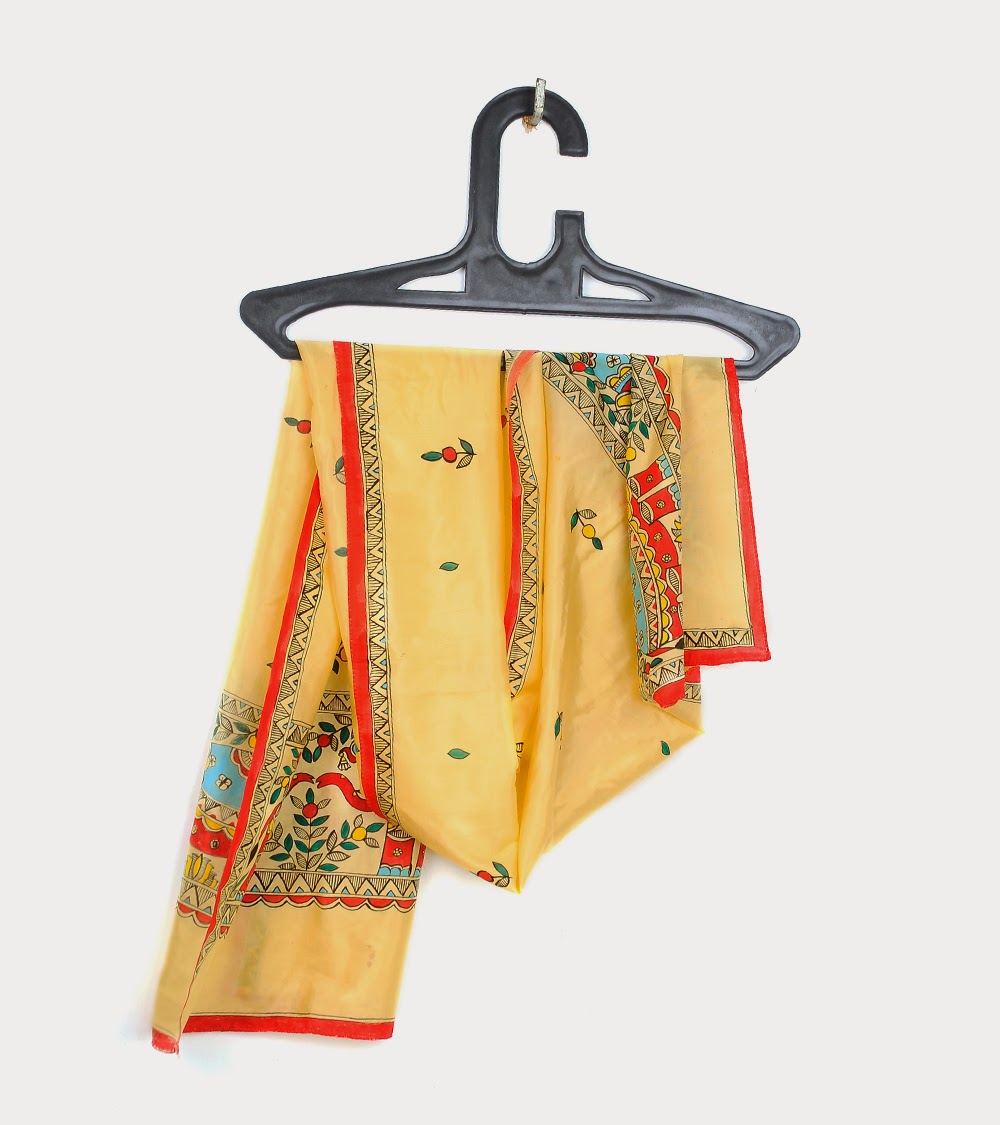An art is a reflection; the reflection of culture,
lifestyle and essentially of an era. An art is a depiction where stories are being retold, the time is
revisited and Madhubani is just no exception to this… essaying the saga of bygone
Indian times, especially Ramayana and Mahabharata, the Madhubani art is truly a
mirror to the then India.
Origin of Madhubani art:
 |
| Madhubani art |
Strangely
enough, the origin of Madhubani art yet remains a mystery…and isn’t really
validated by historical records. It is being believed that the origin dates
back to the times of Ramayana, when King Janaka commissioned painters to paint
murals on walls across palace.
 |
| Madhubani saree |
The legacy passed on for generations and became a very
inherent part of Bihar households as Bhitti-Chitra or wall paintings. The art
was however were concealed within the territorial limits of Bihar until later
in 1934 when Bihar was struck by a major earthquake. William G. Archer, a
British colonial officer happened to find out the paintings among the remnants.
Later in 1966 when the state was hit by famine, Madhubani was re-introduced. Women
were encouraged to replicate the mural paintings on paper and the idea was of
course to generate an effective income source for the villagers. Today,
Madhubani art is practiced across Bihar with the hub at Ranti in Madhubani
district. The art is named after the district itself; it is also known as
Mithila art as the origin is believed to date back to the times of King Janaka,
who was the king of the ancient kingdom of Videha with it’s capital city
Mithila.
Expression of the art:
The
creation didn’t limit itself to only murals but expressed itself as a popular
art form on canvas, handmade paper and also clothing. The design expresses
itself in garments like stoles, scarves and most emphatically in sarees. Most designs
are symbolic…it would depict images of bamboo grove, serpent and other elements
of nature; mostly symbolizing the proliferation of life.
 |
| Mrs. Godavari Devi |
It is widely printed on tussar, khadi sarees and has
also been recognized in several foreign museums viz. Mithila museum, Japan and
Museum of Sacred Art, Belgium and more. Mrs. Godavari Dutta, one of the
renowned painters excelling in the art has been the key person in painting the
Japanese Madhubani gallery. She is also a President’s award winner is indeed
one of the contributors who have spread the art beyond the territorial limits
of the nation.
Availability in stores:
Some
of the specimen of the art is being offered by reputable organizations across India
and Buddha and Beyond is surely one of them. Priti, a much talented contributor
to the creations is the grand daughter of Mrs. Godavari Devi and needless to
mention, a treasurer of the art.
 |
| Madhubani art in saree |
 |
| Model in Madhubani saree |
Buddha And Beyond offers Khadi silk sarees portraying
Maduhbani designs are available at around 6000 INR. The intricate designs complemented with
strokes of vegetable colors simply render a quintessential aura to it’s
appearance.
The essence of Madhubani lies not just in it’s style
but also in the legacy it has carried. Till date, Madhubani continues to be an
exemplary art whose name remains engraved on the pedestals of time.

